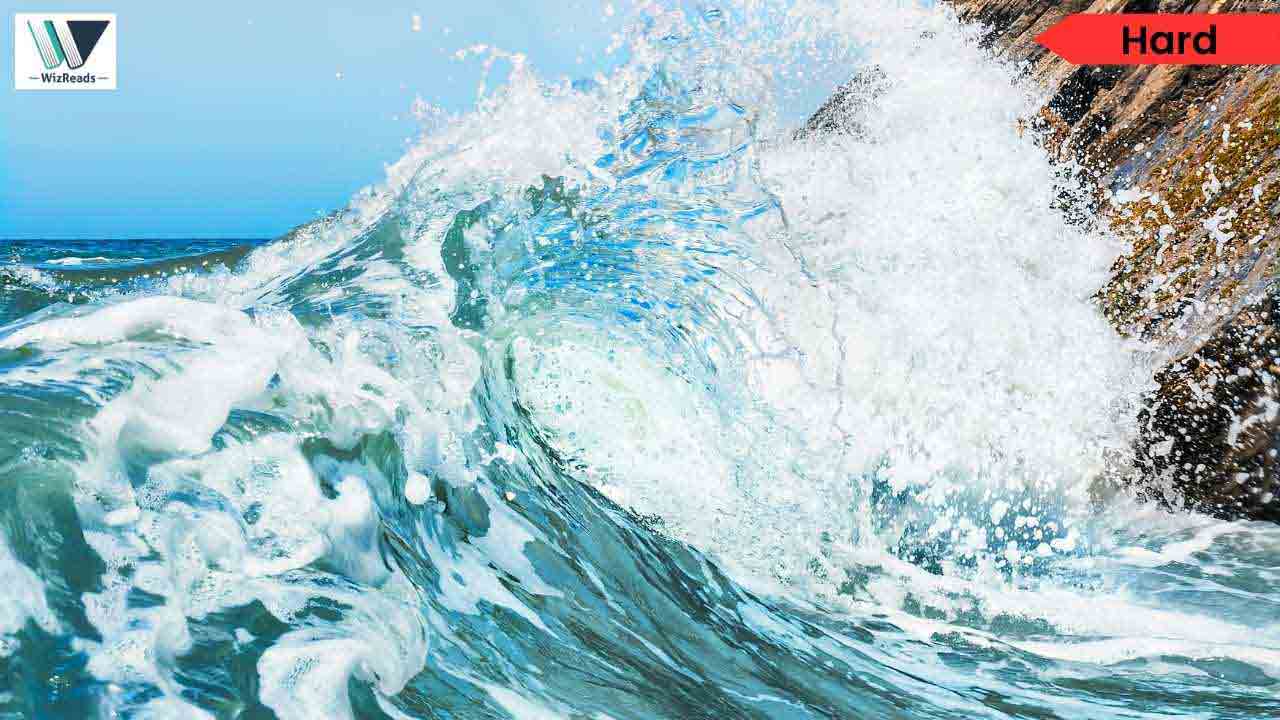These challenging passages explore how ancient indigenous narratives are reshaping modern geological research methods. Can legends about angry kings and giant waves actually contain scientific truths about our Earth’s history?
Read the passage(s) and answer the question(s) that follows. You can choose the GMAT style Reading Comprehension Passage and the RC question that follows or the GRE RC practice variant. Even better, you could try both.
GMAT Passage (Hard difficulty, ~250 words):
In geological research, indigenous oral traditions have traditionally been dismissed as mere folklore, devoid of scientific merit. However, a growing field of study examines “geomyths”—legends that potentially encode accurate geological information through cultural narratives. This approach was exemplified by geoscientist James Terry’s investigation of three massive boulders off Makin Island in Kiribati. Upon learning of a local legend describing how an enraged king summoned three giant waves carrying enormous rocks as punishment for receiving rotten fruit, Terry hypothesized that this narrative might contain verifiable geological data rather than simply representing cultural mythology.
The traditional scientific paradigm would have approached these formations exclusively through conventional geological analysis—examining mineral composition, erosion patterns, and stratigraphic context. Instead, Terry incorporated the indigenous knowledge framework, conducting fieldwork guided by local traditions. This integrated methodology required acknowledging both empirical observation and cultural context, challenging the epistemological boundaries traditionally separating scientific inquiry from indigenous knowledge systems. The investigation necessitated recognizing that narratives transmitted through generations might preserve observations of geological phenomena, albeit expressed through cultural metaphors rather than scientific terminology.
Terry’s methodology unquestionably represents a superior approach to geological investigation. His work convincingly demonstrates that indigenous knowledge, when properly contextualized, should guide scientific inquiry rather than being subordinated to it. The evidence clearly indicates that comprehensive understanding of geological formations requires synthesizing multiple knowledge systems, as conventional scientific approaches that exclude indigenous perspectives risk overlooking crucial insights that have been preserved through generations of cultural wisdom.
GMAT RC Practice – Question Type: Main Idea – Question Difficulty: Medium-High
The primary purpose of the passage is to:
- Criticize conventional geological methodologies for failing to incorporate indigenous knowledge systems
- Advocate for the integration of indigenous narratives into scientific methodology through a persuasive case study
- Argue that indigenous cultural narratives should replace traditional scientific approaches in geology
- Compare the relative merits of Western scientific methods versus indigenous knowledge frameworks
- Explain how geoscientist James Terry discovered the true origin of three boulders near Makin Island
GMAT RC Question Answer & Explanation ▼
The passage not only presents Terry’s work as a case study but explicitly advocates for the integration of indigenous knowledge into scientific methodology. The author’s opinion is particularly evident in the final paragraph, which asserts that Terry’s approach “unquestionably represents a superior approach” and that evidence “clearly indicates” the need to synthesize multiple knowledge systems. While the passage contains criticism of conventional methods (1), such a criticism is not the focus of the passage. Also, the passage doesn’t argue for complete replacement (3), offer a balanced comparison (4), or merely explain Terry’s discovery (5).
Correct Answer: Choice (2)
Challenging GRE Reading Passage (~150 words)
Traditional scientific approaches have often dismissed indigenous oral traditions as mere folklore without empirical value. However, “geomyths”—cultural narratives that encode geological information—are gaining recognition within scientific communities. Geoscientist James Terry exemplified this shift when investigating three massive boulders off Makin Island in Kiribati. After learning of a local legend describing how an angered king summoned giant waves carrying enormous rocks as punishment, Terry hypothesized that this narrative contained verifiable geological data. Unlike conventional methodologies that would rely exclusively on mineral composition and erosion pattern analysis, Terry integrated indigenous knowledge into his research framework. His fieldwork, guided by local traditions, acknowledged that generationally transmitted stories might preserve observations of natural phenomena through cultural metaphors. This case demonstrates how indigenous knowledge can reveal insights potentially overlooked by conventional scientific approaches, suggesting that comprehensive geological understanding might require synthesizing diverse knowledge systems rather than privileging one epistemological framework.
Question Type: Inference – Question Difficulty: Medium – Variant: Select One or More Answers
Which of the following statements is/are true about geomyths according to the passage? Select one or more answer choices.
- They represent indigenous explanations for geological phenomena that contradict scientific understanding
- They can provide valuable guidance for scientific research when properly interpreted
- They preserve observations of natural events through cultural frameworks rather than technical language
GRE RC Practice Question Answer & Explanation ▼
The passage states that Terry hypothesized the narrative “contained verifiable geological data” and integrated indigenous knowledge into his research (2), while also noting that these stories “might preserve observations of natural phenomena through cultural metaphors” (3). The passage never suggests that geomyths contradict scientific understanding (1); rather, it presents them as complementary when properly interpreted.
Correct Answer: Choice (2) and Choice (3)
